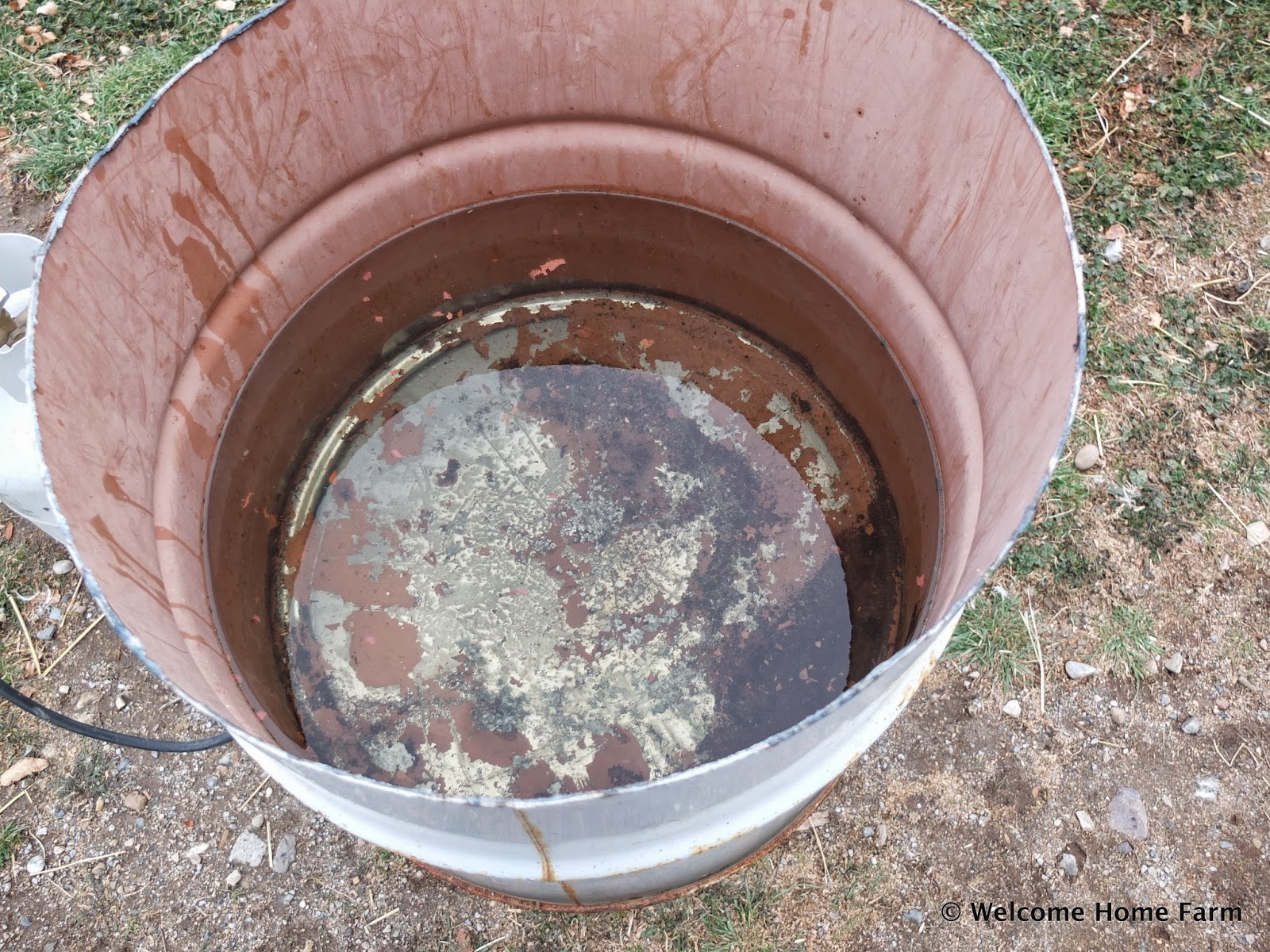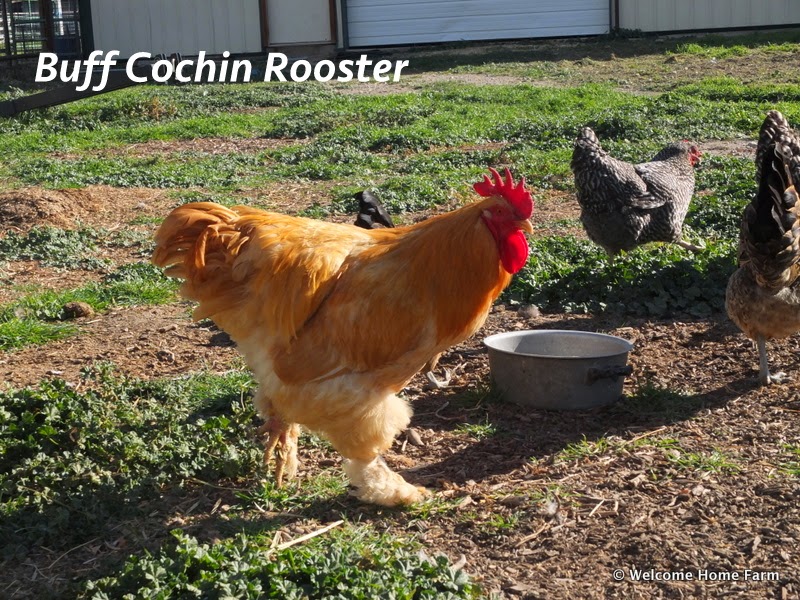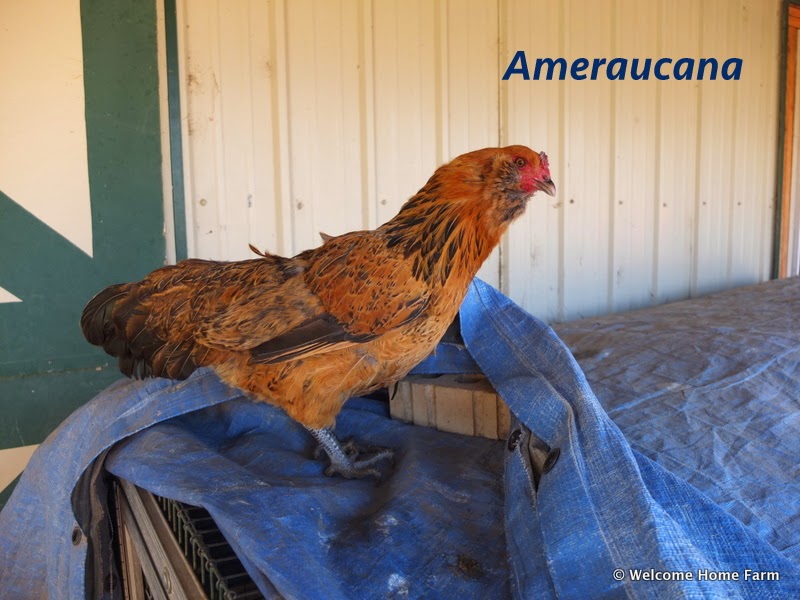Welcome back!
Are you getting ready for Thanksgiving Dinner next Thursday?
We are!
Since you are thinking about all the yummy food you will be eating next week I thought it would be interesting for you to see what types of food the animals on our farm eat.
Before I show you what the animals eat, I thought you would like to know that we got another new animal on the farm this week! Her name is Echo and she is a mini-Jersey cow. She is 9 months old so she is too young to give milk. She is too young to have a calf!
 |
We will breed her in February or March. Cows are pregnant for 9 1/2 to 10 months. If we breed her in February she will have her calf in November.
You will be in Second Grade when she has her calf!
That seems like a very long time. |
Next, I thought you would like to see how our older chicks are doing. They are about 12 weeks old now and just starting to cluck. They still peep like younger chicks most of the time, but you can hear them starting to make an adult noise in the video.
I'm sorry the video is shaky today! Myles decided to sit right in front of me and push me a little bit! Silly dog!
One more update: Here is a photo of the hen who hatched her chicks during Fall Break. They were born on October 17th and 18th. They are about 5 weeks old.
 |
| They are just starting to get some little feathers now! |
Something sad happened the day I took this photo. The mama hen died. We're not sure what happened. Sometimes we can tell if a dog (not ours) got into the yard and got a chicken. Sometimes a fox or a racoon or a mink will kill the hens. We know it happened during the day so we know it wasn't a fox, or a racoon, or a mink. They usually come at night.
The chicks are in a box until they are big enough to go out with the rest of the flock. They have a special light on them and they get special food.
When a mama hen takes care of the chicks she pecks the food until it is small enough for them to eat. Since they don't have a hen to take care of them we give them food that is already ground into small pieces.
I'll show you the box and the light when you come back from Thanksgiving.
* * * * *
Your teacher has small baggies with the different kinds of food we feed the animals. I thought you would like to see and smell the food along with seeing some photos.
There was one kind of animal food that I didn't send. Your teacher told me all the good guesses you made last week!
Most of your guesses were wrong! Some of your guesses were right! I didn't send bugs that the chickens eat. I didn't send grass from the pasture.
No one guessed that I wouldn't send milk! Remi, the calf, is still drinking about 1 gallon of milk a day. If I send milk with your teacher it might spill, or it might go sour. I only sent her dry food for you to look at.
Nutrition is a big word. It means the way animals, plants, and humans take nutrients from food and use them for energy and growth.
If animals, plants, and humans (that's you!) have food that is good for them they grow strong and are healthy. They are able to perform well. That means they are able to do what they were meant to do.
A milk goat that is given the right nutrition (food, vitamins, and minerals) is healthy and strong. She can give 1/2 - 1 gallon of milk each time I milk her.
A calf that is given the right nutrition is healthy and can grow into a big, strong steer.
Chicks that are given the right nutrition are healthy and can grow into hens that will produce eggs.
Chickens that are given the right nutrition are healthy and can produce eggs for our family.
Dogs that are healthy can run and play and learn new tricks. They have energy and can help us with the animals on the farm.
Animals that have the right amount of food and water can stay warm in the winter.
Children that eat the right foods are usually healthy and grow properly. They can learn and do well in school. They can run and play at recess. Now you know why your mother tells you that you need to eat fruits and vegetables every day. You know why she tells you not to eat too many sweets.
People eat different foods to get proper nutrition and stay healthy. Animals need to eat the same things every day to get the proper nutrition and stay healthy. They don't need to eat different foods every day. Most animals will get sick if you change their food every day.
You will have many different types of food for Thanksgiving Dinner. The animals on our farm will have the same food they eat every day.
That may sound mean to you, but it is what is best for the animals. We like to do what will keep our animals healthy and strong!
 |
This is cat food.
You might know what cat food looks like if you have a cat.
Cats need to have the same food every day or they may get sick. |
 |
This is dog food.
Some dogs eat too much food and get too fat! They are not healthy if they are fat.
Our dogs get fed about 1 cup of food for breakfast and 1 cup of food for dinner.
That is all they need to stay strong and healthy, so that is all they get. |
 |
This is called a 'grain blend.'
If you look closely you can see different types of grain and some pellets in the food.
This is what we feed to the milk goats, Remi (the calf), and Echo.
We never feed this type of feed to the bucks (boy goats). It isn't good for them.
We can feed a little bit of this to the chickens, ducks, and turkeys. |
|
 |
This is wild bird food.
We have bird feeders on our farm. One day I will show you some pictures of the birds that visit our feeders. |
 |
These are alfalfa pellets.
They are made from alfalfa hay. We feed a little bit of this to the milk goats, Remi, and Echo. We don't feed them very much of this because we also feed them hay.
We don't feed this to the bucks (boy goats) because it will cause problems for them. |
 |
These are Timothy hay pellets.
This is what we feed to the bucks! They don't get very much of this because we also give them hay. |
 |
This is oat hay and alfalfa hay.
We feed this to the milk goats, the bucks, Remi, and Echo.
These animals also eat grass in the pasture. In the winter there isn't any good grass on the pasture so we make sure they have plenty of hay to eat.
Can you see the seeds in the hay? Those are oat seeds! |
 |
This is called "Calf Manna."
If you guessed that we give this to the calves, you are right! We give it to any animal that needs more protein. You probably eat meat and beans for protein. Protein helps you grow properly.
Our animals don't eat meat but they need protein just like you do.
We feed Calf Manna to the milk goats, Remi, and Echo. Milk goats need protein and fat to make milk. Remi and Echo need protein to grow. |
 |
These are called lay pellets.
We feed them to the chickens and the turkeys. Lay pellets have protein, too! Chickens need protein to stay warm and to make eggs. Some people like to feed chickens 'mash.' It is made up of the same things that pellets are made of, but it looks like corn meal. It looks like the chick starter in the next photo, too.
We like pellets because it doesn't get wasted like the mash does. Chickens can make a mess. If their food is small it can get lost in the dirt when they peck it out of their feeder. Then it's wasted! |
 |
This is chick starter.
It has the right nutrition for chicks to grow into chickens. It also is small enough for the chicks to eat. They can't eat pellets like adult chickens can because their beaks aren't big enough yet. |
In an upcoming post I will show you what the animal feeders look like. Last week you saw the metal tub that we use for the turkey's food. We have a hanging feeder for the chickens. The chicks have a special feeder for their food. The goats eat their hay out of a special feeder, too.
When you eat Thanksgiving Dinner this week look at the different types of dishes and bowls that the food is served in. Each dish is made to hold a different type of food. Bowls hold soup and liquids. Different size plates hold different types of foods.
Animals have feeders that hold their food just like you have bowls and dishes to hold your food!
I hope you have a wonderful Thanksgiving!






























